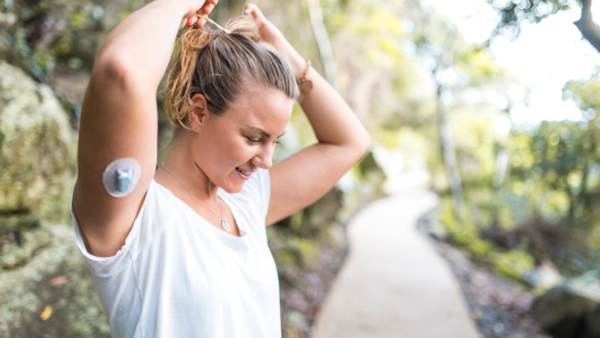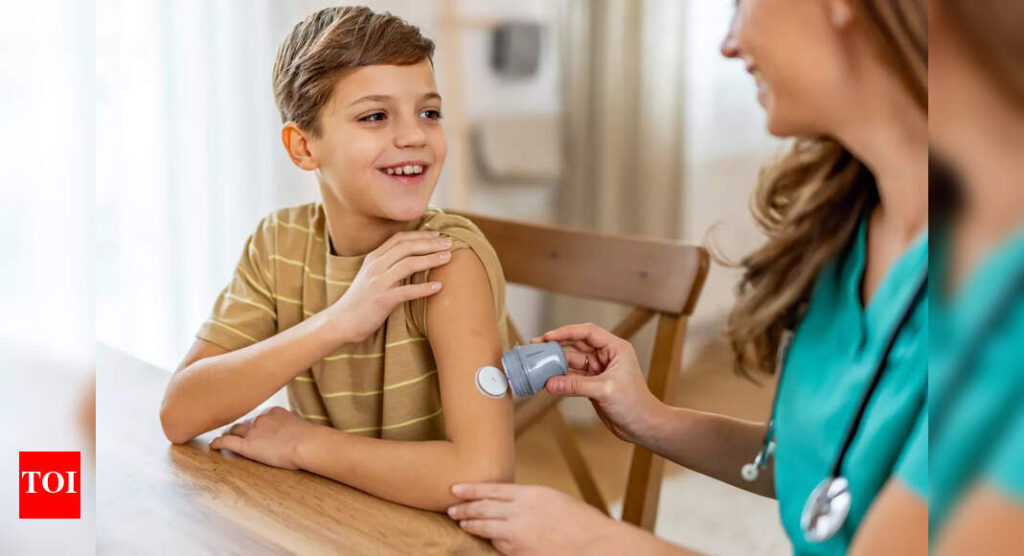The world of diabetes management has come a long way. Gone are the days when pricking fingers multiple times a day was the only way to check blood sugar. Today, there’s something called a diabetic patch, a small device that promises to make monitoring easier and less painful. It sticks to the skin and tracks glucose levels — sounds like magic, right? But does this little patch actually draw blood? Or is there more to the story? Here is all we need to know about the facts, clear the confusion, and explore what these patches really do.
What is a Diabetic Patch, and why is it so talked about?
A diabetic patch is a small, coin-sized wearable device that sticks onto the skin, usuallyon the arm or abdomen. It is designed to monitor glucose levels in real-time, 24×7, without the constant need for finger pricks.
Most diabetic patches work using Continuous Glucose Monitoring (CGM) technology. These patches have a tiny sensor that either sits just under the skin or touches it gently from the outside. It reads glucose levels from the fluid just beneath the skin, called interstitial fluid, not directly from the blood.

The buzz around diabetic patches has grown, especially among people who live with Type 1 and Type 2 diabetes, for the convenience and freedom they offer.
The common belief: “It must be drawing blood”
The moment someone sees a patch that replaces the need for finger pricks, it’s easy to assume: this must be drawing blood underneath the skin.
Some patches do have a microscopic filament or sensor that penetrates just below the skin, but not deep enough to reach blood vessels. This sensor reads sugar levels from the interstitial fluid. There may be a tiny prick-like sensation when it’s first applied, but no continuous blood is drawn.
In simple terms, it’s more of a clever reader than a blood-sucker.
The truth behind that tiny filament
The key part of the diabetic patch is a hair-thin sensor, which is about the width of a strand of hair. It’s inserted with an applicator and goes just 5 mm under the skin — deep enough to reach the fluid between cells, but not deep enough to hit blood vessels.
This fluid changes slightly slower than blood when sugar levels rise or fall, but it still gives a reliable picture of overall trends. That’s why CGM patches may sometimes show a slight delay compared to a finger-prick test.
So, while there is a superficial insertion, there is no active blood drawing like syringes or lancets.

What about those painless, non-invasive patches?
There’s a new wave of diabetic patches in the making — completely non-invasive ones. These are still being tested or just entering markets. Instead of a sensor going under the skin, they use light, sweat analysis, or other biosignals to measure glucose.
These sound futuristic, and they are. Some prototypes can check sugar levels through the skin using laser tech or electrochemical sensors — without breaking the skin at all. While promising, these are still under scientific scrutiny for accuracy.
So for now, most widely available CGM patches still use micro-sensors under the skin, but blood is not involved.
Why this innovation feels personal
For anyone who has watched a loved one manage diabetes — with the daily finger pricks, the sudden sugar drops, the heavy routines — seeing them use a patch instead can feel like witnessing a little miracle. It brings a kind of quiet relief. A sense of freedom.
It’s not just about the technology; it’s about regaining some normalcy in life. Going for a walk without packing a kit. Sleeping peacefully without alarms. Laughing without constantly checking the sugar numbers. The diabetic patch doesn’t just monitor glucose — it gives back small slices of ease.
So, is it truly better than finger pricks?
Finger-prick tests are still the gold standard for many. They are quick and direct. But patches bring a new dimension — they show sugar trends throughout the day, including during sleep, meals, or exercise.
That said, most doctors recommend using both: patches for continuous insight, and finger-pricks to double-check when readings seem off. Especially during illness or when insulin adjustments are being made.
So no, the patch doesn’t entirely eliminate pricks, but it certainly reduces the burden.


